MITSI BACK ON THE VAN MAP
Mitsubishi dropped off the radar for van buyers when the L300 disappeared back in 2015 as it could no longer meet safety standards. But now, there’s a new three-diamond-badge light-commercial van, the Mitsubishi Express. A French- built restyle of the Renault Trafic, it’s the result of pressure from New Zealand and Australian dealers, seeking a van option for fleets already driving the Triton ute.
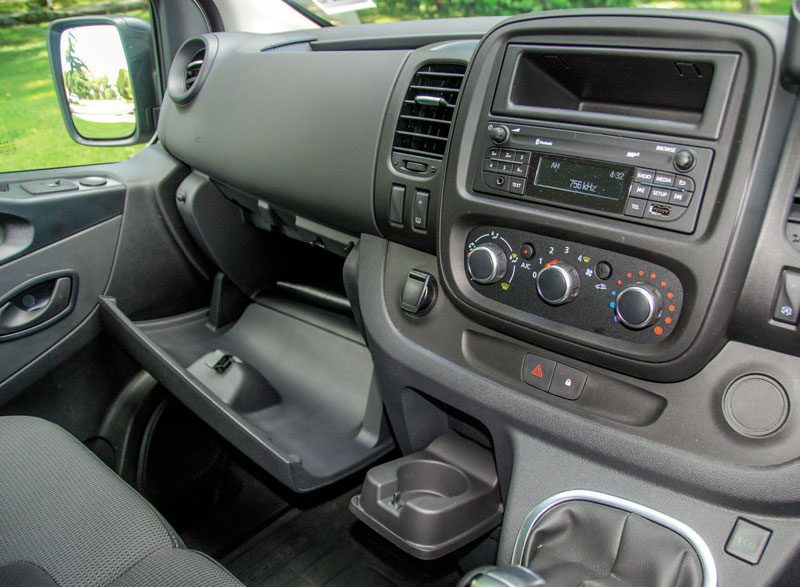
Plenty of cabin storage in a range of sizes, including dash-top trays.
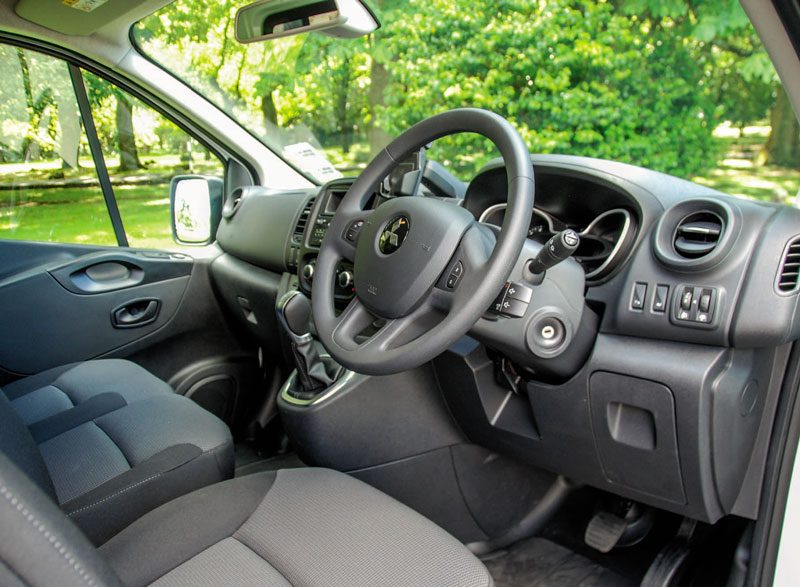
Spacious cabin fits three abreast, or two with fold-down laptop table.
A Mitsubishi Express test vehicle became available just as we’d lined up a roomy wagon for two fully laden trips to the Bay of Islands. With the van okayed for the trip, that became a long-distance long weekend instead, parlaying the extra travel days into a pre- Christmas break.
The Express arrived as a short-wheelbase 2WD panel van with sliding doors on both sides, and side-opening rear doors which can open out to 160 degrees. There’s a twin- turbo 1.6-litre diesel six-speed manual or a 2.0-litre single turbo with six-speed auto.
That’s what we received, and though the cabin ambience was a little more basic than some of our recent offerings, it was just as easy for any car driver to hop up and quickly feel at home. That’s helped by the standard steel bulkhead, which protects occupants from a shifting load and road noise while making temperature-control systems more efficient.
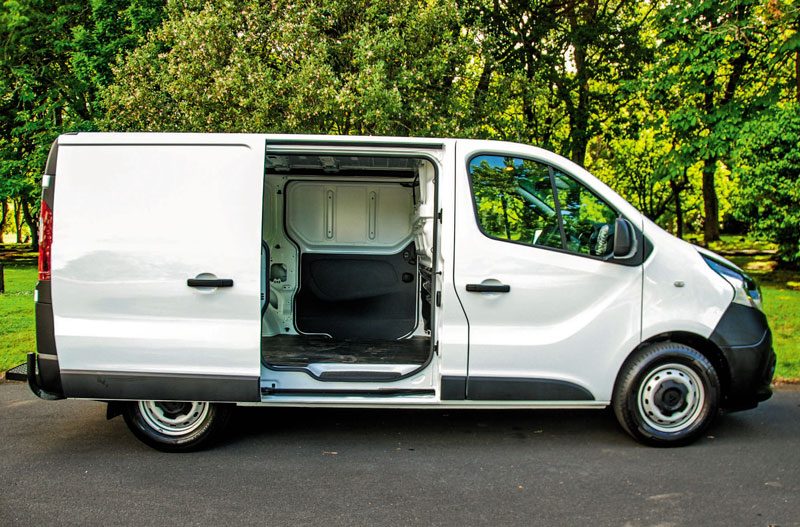
Wide-opening sliding doors each side.
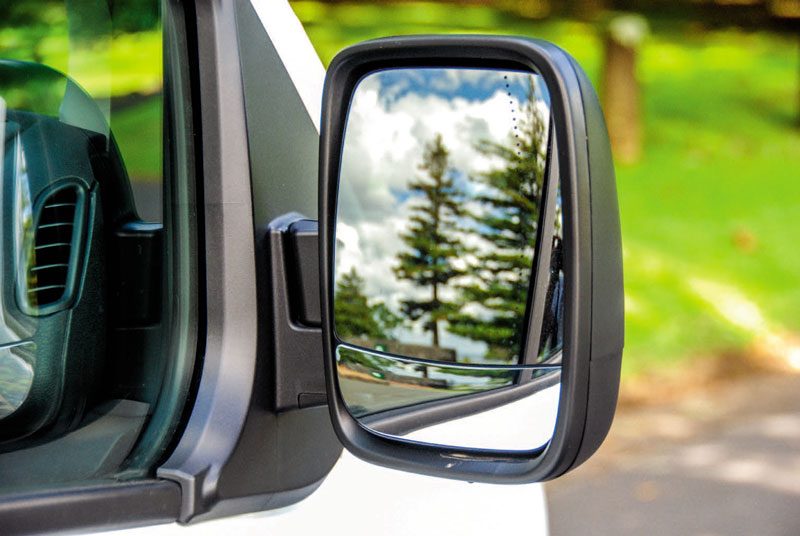
Mirror has three sections to improve the view behind when manoeuvring.
The single-turbo diesel uses a variable nozzle turbo with speed sensor, which we’re told is efficient at a range of engine speeds. It uses cooled low-pressure exhaust gas recirculation to cut NOx production and lower the cylinder temperature and is linked to a double-clutch auto, which calculates your likely next gear requirement and preps it for the change. We found it worked very well indeed, even climbing and descending hills or slowing into and pulling out of tighter corners. It was almost invariably in the right gear although one can always opt to self-change if needed. Start-stop was unobtrusive and will prove valuable for those frequently tackling stop- start traffic.
Loading proved a doddle, with good access to the rear via the back and sliding side doors, and a standard-width New Zealand pallet or sheet of plasterboard will fit between the wheel arches. Since we were stacking smaller boxes that wasn’t our concern. But we did appreciate access steps and the fact that, with both sliding doors open as well as the rear, it was easy to pack boxes and bags tightly and tie them securely in place via some of the 16 in-built cargo rings – three floor- mounted each side, and five side-mounted per side. If you need to carry anything lengthy, open the trap door 228mm high and 510mm wide from the bulkhead leading under the passenger seat to add 413mm in length.
With the trap door shut, lift the seat base to access a 46-litre compartment to hide valuables – handy given we had a few stops and were carrying laptops and the likes.
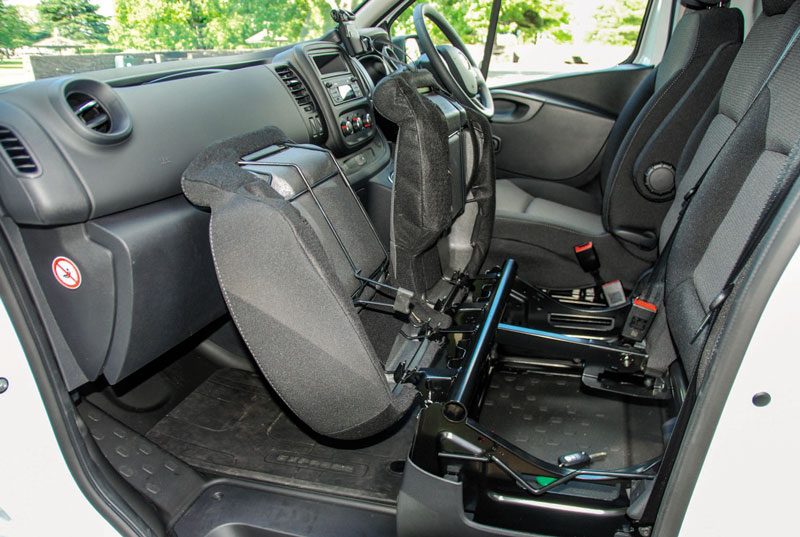
Roomy secure under-seat storage.
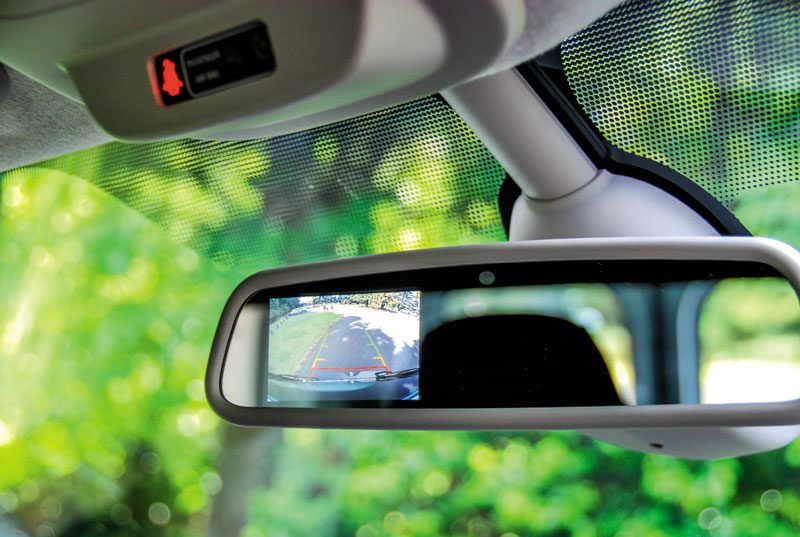
Reversing camera shows up in rear-view mirror. It works okay, but the screen’s a bit small for detail.
We found the suspension remarkable, efficiently smoothing the often bumpy rural roads we travelled, though it felt a smidge better with a load aboard.
As for the cabin, the layout is plain, buttons and dials large and easy to find and access, and there’s plenty of storage – 89 litres in all, says Mitsubishi, including three cup holders. The middle backrest folds down to reveal a workstation with pull-out clipboard and holder, laptop storage and one more cupholder, and there’s even a removable smartphone holder for the smaller phones.
Audio and phone controls are mounted around the steering wheel, and there’s an array of safety features, including an adjustable speed-limiter to help avoid tickets, and trailer sway mitigation. It would have been nice, given no side rear windows, to have the increasingly common blind- spot warning – though we did appreciate the cornering function on the fog lights and the dusk-sensing headlights.
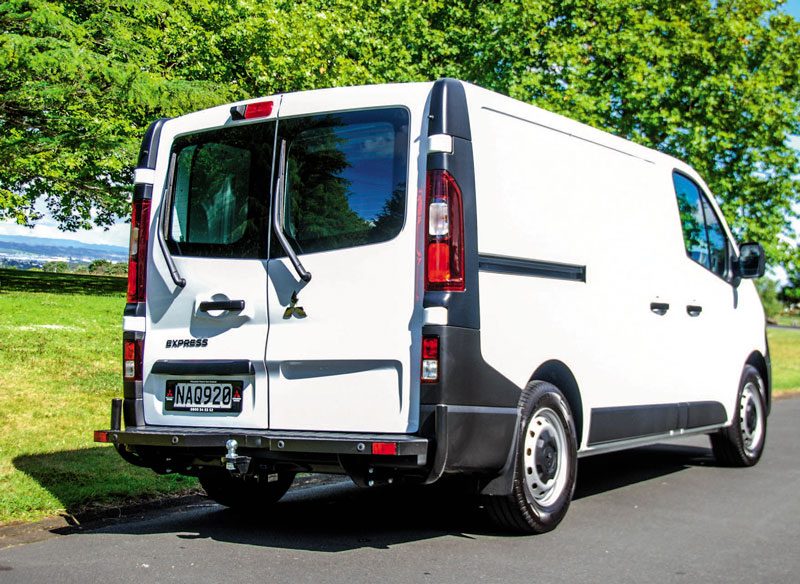
Tall lights easily visible from afar, rear doors open out wide if needed.
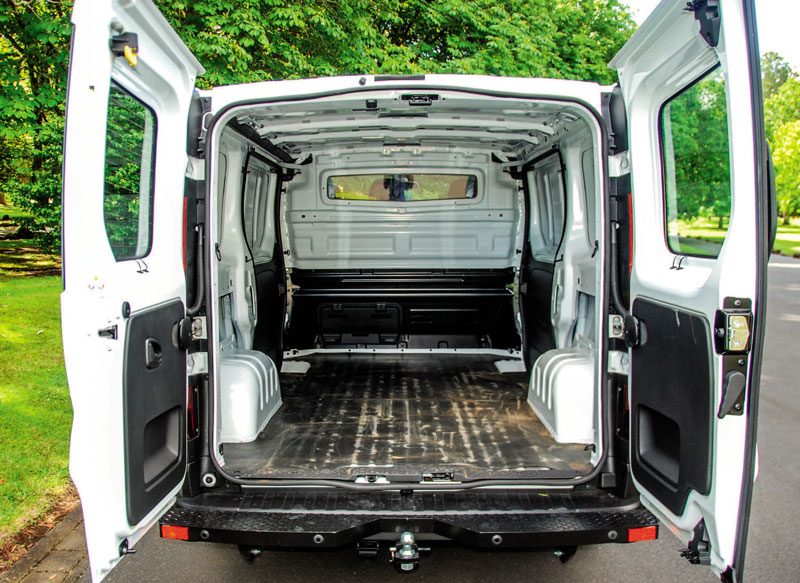
Optional floor matting helps prevent goods sliding or scratching the floor, cargo area takes a full-sized sheet of plasterboard between the wheel arches.
We did wonder what the Express would be like manoeuvring, especially as one delivery involved backing downhill at an acute angle from the road, then turning steeply downhill into a side driveway, using just the mirrors and the reversing camera with its small screen in the rear-view mirror. It helps that the large door mirrors are double aspherical – divided into three sections – and the diesel’s excellent low-rev torque made short work of the slope, no doubt assisted by ‘extended grip’, which enhances traction performance at low speeds. We found the all-round view adequate for the tricky all-but-blind turns but would have liked a slightly larger screen view.
We were curious about the van’s fuel economy. The claim is 7.3l/100km overall. The van had travelled only 300km on pickup, and we traversed 652km of mainly rural highway, with some round town and hilly running, plus urban manoeuvring. Economy improved as our test progressed and was still inching down when we returned the van, with 8.4l/100km showing on the info screen – we didn’t try eco-mode for long enough to know how much difference it would make.
Any reservations we might have had about fancy finish or a few extra feature flourishes were scotched by the van’s price. The 1.6-litre variant with its higher towing and payload capacity and lower thirst for fuel retails at $39,990, the 2.0-litre we tested at $44,990. Yep, Mitsubishi is well and truly back on New Zealand’s van map.
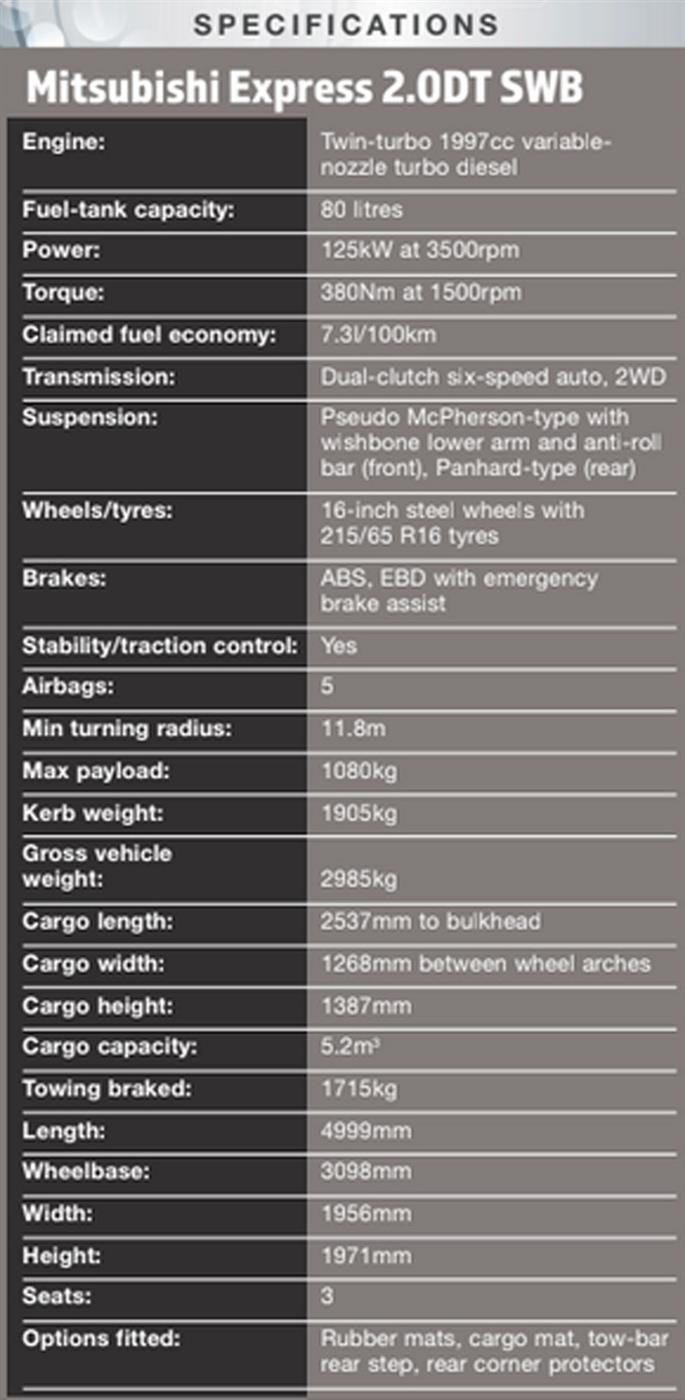
Read more
Of culture and longevity
0 Comments37 Minutes
Life’s essentials
0 Comments43 Minutes
Hiding in plain sight
0 Comments34 Minutes
Proceeding Reputations
0 Comments25 Minutes





